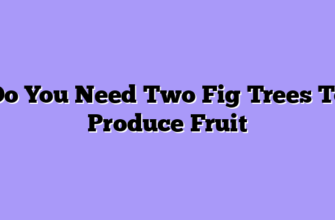You know what’s funny? I’ve spent countless hours explaining to visitors why that vigorous vine covering my greenhouse wall isn’t just decorative—it actually produces fruit. Most people know climbing fig (Ficus pumila) as that aggressive creeping plant that swallows garden walls and creates living green tapestries on buildings.
What they don’t realize is that this humble ornamental has a secret life as a fruit producer, and it’s one of the most intriguing plants I’ve worked with in my exotic fruit collection.
Let me take you on a journey through the world of climbing fig fruit, because trust me, this is one of those plants that’ll completely change how you think about urban agriculture and hidden food sources.
What Exactly Is Climbing Fig?
First, let’s get our terminology straight. When I talk about climbing fig, I’m referring to Ficus pumila, though you might know it by other names. In the southern United States, folks call it creeping fig. Over in Asia, where this plant originally hails from, it’s known by various local names—the Chinese call it “薜荔” (bì lì), the Japanese refer to it as “オオイタビ” (ooitabi), and in Vietnam, it’s “sung trâu.” In some tropical regions, people simply call it “climbing rubber plant” because of its fig family heritage.

Here’s where it gets interesting: the plant has two distinct life phases, kind of like a botanical Jekyll and Hyde. The juvenile phase produces small, delicate heart-shaped leaves about an inch long. But when it reaches maturity—usually after climbing to a certain height or achieving enough growth—it transforms. The mature phase develops thicker, leathery leaves up to four inches long, and this is when it starts producing fruit.
I remember the first time I noticed this transformation in my own cultivation area. I’d been growing creeping fig for aesthetic purposes, letting it cover an old stone wall, when suddenly I spotted these strange, round fruits developing on the upper portions. It was like discovering a secret room in a house you’d lived in for ages!
The Peculiar Fruit: Appearance and Development
Let me paint you a picture of what climbing fig fruit actually looks like, because it’s not what most people expect. These aren’t your standard grocery store figs. Instead, you’re looking at rounded or pear-shaped syconia (that’s the botanical term for fig fruits) that measure roughly 2-3 inches in diameter. When young, they’re a vibrant green color with a slightly fuzzy texture. As they mature, they transition through yellowish-green stages before reaching full ripeness with a purplish or brownish tint.
The surface texture reminds me of a tennis ball—that same slightly rough, fuzzy feeling. Inside, the fruit is filled with tiny flowers and seeds embedded in a gelatinous matrix. It’s completely different from the common edible fig (Ficus carica) that most people are familiar with. Where regular figs are sweet and jammy, climbing fig fruit is… well, let’s just say it’s an acquired taste in its raw form.
| Characteristic | Climbing Fig Fruit | Common Fig Fruit |
|---|---|---|
| Scientific Name | Ficus pumila | Ficus carica |
| Size | 2-3 inches diameter | 1-4 inches length |
| Shape | Round to pear-shaped | Teardrop or round |
| Surface Texture | Fuzzy, rough | Smooth, may have small hairs |
| Raw Taste | Bland to slightly sweet | Very sweet, jammy |
| Primary Use | Processed (jelly, beverage) | Fresh eating, dried |
| Growing Habit | Climbing vine | Tree or shrub |
In my cultivation experience, the fruit development takes several months. I typically notice fruit set in late spring, and by mid to late summer, they’re approaching maturity. The exact timing varies depending on your climate zone—I’m working in a warm temperate to subtropical environment, which suits Ficus pumila perfectly.
Traditional Uses and Modern Applications
Now here’s where things get really fascinating. While Americans typically ignore climbing fig fruit entirely, in East Asian countries, this plant has a rich history of culinary and medicinal use spanning centuries. I’ve spent considerable time researching and experimenting with traditional preparation methods, and I’ve got to say—once you know what to do with these fruits, they’re remarkably versatile.
In China, particularly in the southern provinces, climbing fig fruit has been used to make a traditional jelly dessert called “涼粉” or “薜荔果凍” (climbing fig jelly). The process is pretty ingenious. Local producers harvest the mature fruits, cut them open, and extract the seeds and internal pulp. These contain natural pectin—lots of it. When you soak this material in water, it releases pectin that gels beautifully without any additional thickening agents needed.
I’ve tried this process myself in my experimental kitchen, and the results are genuinely impressive. Here’s my basic method:
- Harvest mature fruits when they’ve turned yellowish-brown and feel slightly soft
- Cut fruits open and scoop out all the internal material (seeds, flowers, and gel)
- Wrap the material in cheesecloth or a fine mesh bag
- Soak in water (about 1 part fruit material to 10 parts water) for several hours
- Squeeze and massage the bag to release the pectin into the water
- Strain and refrigerate the liquid—it will set into a jelly within a few hours
- Serve chilled with sugar syrup, honey, or fresh fruit
The resulting jelly has a unique texture—slippery, cooling, and refreshing. It’s especially popular during hot summer months. The taste is mild and neutral, which makes it perfect for absorbing flavors from whatever you serve it with. Think of it as a blank canvas for desserts.
Beyond jelly production, I’ve discovered that climbing fig fruit is used in traditional Chinese medicine. Practitioners claim it has cooling properties and can help with inflammation and heat-related conditions. While I can’t make medical claims myself, I find the traditional knowledge fascinating and worth preserving.
Growing Climbing Fig for Fruit Production
Alright, let’s talk cultivation. If you’re thinking about growing Ficus pumila for fruit rather than just ornamental purposes, there are some key strategies I’ve learned that make all the difference.
Essential Growing Requirements:
- Climate: USDA zones 8-11 work best; the plant tolerates brief cold snaps but prefers warmth
- Sunlight: Juvenile plants handle shade, but mature fruit-bearing sections need partial to full sun
- Soil: Remarkably adaptable—I’ve grown it in everything from heavy clay to sandy loam
- Water: Moderate moisture; established plants tolerate drought but produce better with consistent watering
- Support structure: Needs vertical surfaces to climb—walls, trellises, fences, or even tree trunks
The tricky part about growing this plant specifically for fruit is getting it to reach maturity. Remember that Jekyll and Hyde transformation I mentioned? You need to encourage that mature phase, which typically happens when the plant climbs high enough or is exposed to the right environmental conditions.
In my growing operation, I’ve found that vertical growing surfaces positioned to receive good sunlight dramatically increase fruit set. I’ve constructed several dedicated walls and vertical structures specifically for creeping fig cultivation. The vines that reach the top of these structures—usually 8 to 12 feet high—are the ones that transition to the mature, fruit-bearing phase.
Here’s something most ornamental growers don’t realize: the plant needs to be somewhat stressed or mature before it switches to reproductive mode. When climbing fig is growing rapidly in perfect conditions with unlimited space, it stays in juvenile vegetative mode indefinitely. But when it reaches a physical boundary, experiences some root restriction, or encounters environmental stress, that’s when the magic happens—mature growth emerges, and fruit production begins.
| Growing Factor | Juvenile Phase | Mature Phase |
|---|---|---|
| Leaf Size | 0.5-1 inch, heart-shaped | 2-4 inches, elongated |
| Growth Pattern | Creeping, flat against surface | Extends outward from surface |
| Root Production | Abundant aerial rootlets | Fewer aerial roots |
| Fruiting Capability | None | Produces fruit |
| Light Requirements | Shade tolerant | Prefers brighter light |
Challenges and Considerations
Let me be straight with you—growing climbing fig for fruit production isn’t for everyone, and it comes with some genuine challenges that I’ve had to navigate.
First, there’s the invasiveness issue. Ficus pumila is aggressive. I mean really aggressive. It’ll escape your intended growing area if you’re not vigilant. In some regions, it’s actually considered invasive because it can smother native vegetation and damage building structures. I’ve learned to manage this through regular pruning and careful placement, but it requires ongoing attention. This isn’t a plant-it-and-forget-it crop.
Second, fruit production can be inconsistent. Unlike my reliable apple or peach trees that produce predictably each season, climbing fig fruiting seems influenced by numerous factors—temperature fluctuations, moisture levels, plant maturity, and even individual genetics of the specimen. Some of my climbing fig installations produce abundantly, while others, seemingly in identical conditions, produce sporadically.
Third—and I’ll be honest here—the market for climbing fig fruit in the United States is virtually non-existent. When I harvest these fruits, I’m primarily processing them myself for experimental purposes or sharing with the Asian community members who recognize and appreciate them. There’s no established distribution chain, no market price, and most consumers have no idea what to do with them. This is purely a niche cultivation project.
The processing itself is labor-intensive. Unlike picking an apple and eating it immediately, climbing fig fruit requires harvesting, cleaning, seed extraction, and processing before you get to the usable jelly product. It’s time-consuming work that doesn’t scale particularly well for commercial operations.
Why I Still Grow It
So why do I continue cultivating climbing fig for fruit when it’s challenging, labor-intensive, and has no commercial market? Great question, and I ask myself that sometimes while I’m up on a ladder harvesting fruits from a vine-covered wall!
The answer is multifaceted. First, I’m genuinely fascinated by underutilized food plants, especially those with rich cultural histories. Climbing fig represents thousands of years of traditional knowledge from East Asian cultures, and I believe that knowledge is worth preserving and exploring, even here in a completely different context.
Second, there’s something satisfying about producing food from unexpected sources. Urban environments and small farms often have plenty of vertical space—walls, fences, sheds—that could support climbing fig cultivation. In an era where we’re thinking more about food security and local production, utilizing vertical surfaces for food production makes sense. Why not cover that ugly concrete wall with something that’s both beautiful and productive?
Third, the plant’s natural pectin production is remarkable. In a world where we often rely on commercial pectin products (many derived from apple pomace or citrus peel), having a plant that produces high-quality gelling agents naturally is valuable knowledge. I’ve experimented with using climbing fig pectin for setting other fruit preserves, and it works surprisingly well.
Finally—and this might sound sentimental—I love introducing people to plants they’ve walked past a thousand times without recognizing their potential. That moment when someone realizes the creeping vine on their fence could produce food? That’s pure gold. It shifts perspectives about what constitutes a “food plant” and opens minds to the incredible diversity of edible species around us.
The Future of Climbing Fig Cultivation
Looking ahead, I see potential for climbing fig fruit to carve out a small niche in specialty food markets, particularly in areas with significant Asian populations who remember traditional preparations. The natural pectin angle also interests me—as more consumers seek plant-based, minimally processed food ingredients, climbing fig could offer a sustainable, easily grown pectin source.
I’ve been experimenting with modern applications too. The neutral-tasting jelly works beautifully in molecular gastronomy applications. I’ve used it as a base for flavored gels, as a component in layered desserts, and even as a vegan gelatin substitute in some recipes. The possibilities extend beyond traditional preparations.
Climate change considerations also come into play. As temperatures warm in many regions, plants like Ficus pumila that tolerate heat, drought, and urban conditions become more valuable. This is a tough, resilient species that thrives where more delicate plants struggle.
Wrapping Up
Climbing fig fruit isn’t going to replace strawberries at your local farmers market. It’s not going to become the next superfood trend (though it probably has interesting nutritional properties we haven’t fully explored). What it represents, though, is something I find equally valuable—a connection to traditional food knowledge, a reminder that food plants come in unexpected forms, and an example of how we might think differently about productive urban landscapes.
If you’ve got climbing fig growing on your property—and many people in warmer climates do—I encourage you to look at it with fresh eyes. Let some of those vines reach maturity. Watch for those strange round fruits. Maybe try making that traditional jelly. At minimum, you’ll gain appreciation for a plant you probably considered purely ornamental.
And who knows? Maybe you’ll join me in this quirky corner of exotic fruit cultivation, harvesting fruits from your walls and fences while your neighbors wonder what on earth you’re doing. Trust me, the confused looks and the eventual “wow, I had no idea” reactions make it all worthwhile.
Now if you’ll excuse me, I’ve got a batch of climbing fig jelly setting in my refrigerator, and I’m curious to see how this latest experiment turns out.








